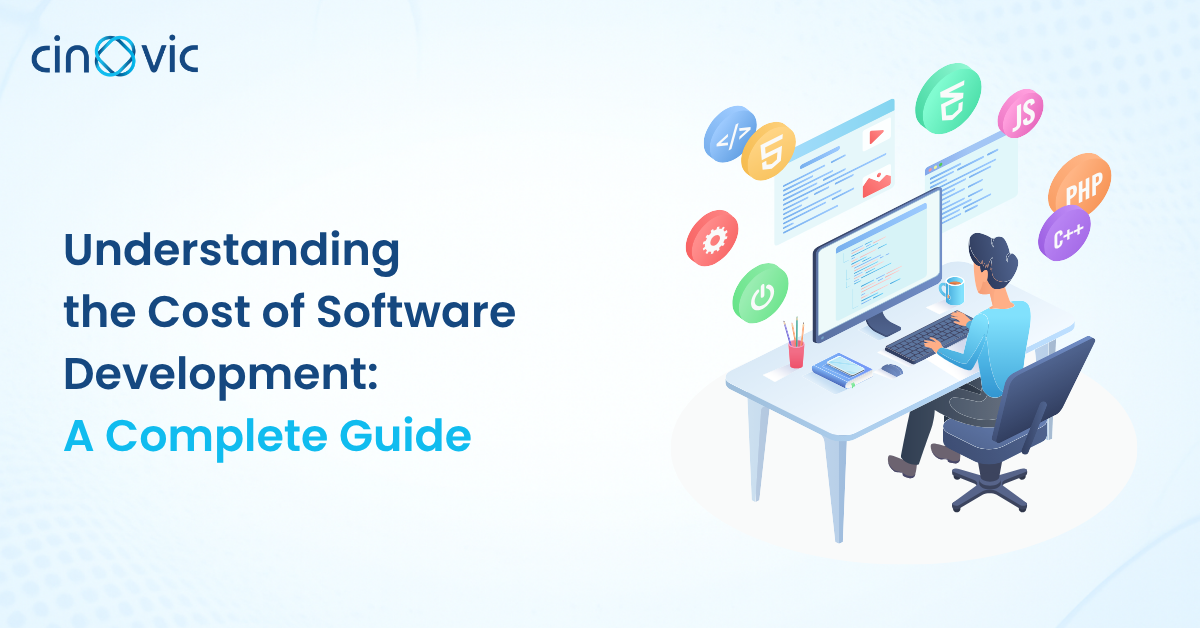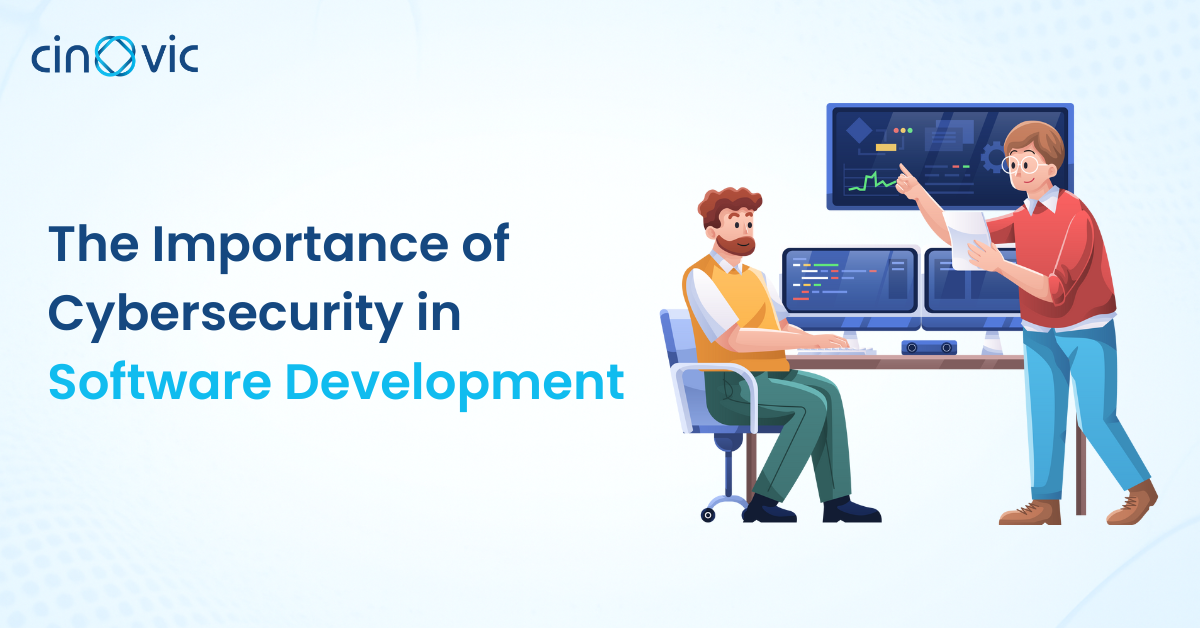
Understanding the Cost of Software Development: A Complete Guide
Table of Contents
Introduction
“How much will it cost to build my software?”
This is perhaps the most common question businesses ask when approaching a software development company. And while it might sound simple, the truth is—there’s no one-size-fits-all answer.
The cost of software development in 2025 depends on several factors, including project scope, complexity, technologies used, and integrations required. Some projects may cost a few thousand dollars, while enterprise-grade solutions may run into millions.
At Cinovic, we believe in transparency. That’s why we’ve created this complete guide to help you understand what drives costs, what hidden expenses you should prepare for, and how to maximize your ROI.
Why Understanding Cost Is Crucial
- Budget Planning: Knowing the cost upfront helps you allocate resources efficiently.
- Avoiding Surprises: Many projects fail because hidden costs weren’t factored in.
- Choosing the Right Partner: Cost breakdowns help you compare value, not just price.
Investing in custom software development isn’t an expense—it’s a strategic growth decision.

Factors That Influence Software Development Cost
1. Project Complexity
The complexity of the project is the biggest cost driver.
- A simple e-commerce website may be affordable.
- But a full-scale marketplace with omnichannel integration and AI features will require higher investment.
For example, Cinovic’s e-commerce solutions range from building simple online stores to advanced platforms with headless commerce and mobile-first capabilities.
2. Platform Choice
The platform you choose impacts development cost.
- Mobile Apps – Require dedicated development for iOS, Android, or cross-platform. See our E-Commerce Mobile App Development Services.
- Headless Commerce – Offers flexibility but demands skilled developers and API integration. Explore our Magento 2 Headless Commerce Development.
- Omnichannel Platforms – Require unifying online and offline systems. Learn about our Omnichannel Development services.
Each choice comes with unique cost considerations, but also with long-term value.
3. Features & Functionality
Basic features like product catalogs and user logins are cheaper.
Advanced features such as AI-driven personalization, AR shopping, or multi-language support add to cost but deliver higher ROI.
Example: A mobile-first app with personalized offers may cost more, but it dramatically improves conversions.
4. Integrations with Existing Systems
E-commerce brands often require integrations with:
- ERP for inventory
- CRM for customer data
- Payment gateways
- Marketing automation tools
The more integrations required, the higher the cost. But without them, businesses risk inefficiency and customer dissatisfaction.
5. Development Model
There are typically two models:
- Fixed-Cost Model: Best for small, defined projects. Clear budget, limited flexibility.
- Agile/Time-Based Model: Best for evolving projects where features may change. Costs vary but ensure adaptability.
Cinovic often recommends a hybrid approach—starting fixed, then moving agile for scalability.
6. Team Location & Expertise
Costs differ across geographies.
- Offshore developers may be cheaper but lack expertise.
- Hiring a skilled software development company like Cinovic ensures quality, compliance, and future-proof solutions.
Hidden Costs You Should Be Aware Of
Even after initial development, businesses often face unexpected costs. Being aware of these ensures smoother scaling.
- Maintenance & Updates – Software must be regularly updated to stay relevant.
- Security Upgrades – Compliance with evolving standards (PCI, GDPR, etc.).
- Hosting & Cloud Costs – Cloud-based scaling requires monthly costs.
- Training & Onboarding – Teams need to be trained on new platforms.
- Third-Party Licenses – APIs, plugins, or premium tools may require subscriptions.
At Cinovic, we address these early to avoid future surprises.
Cost Ranges in 2025 (Approximate)
- Basic Software Development: $10,000 – $50,000 (small e-commerce or apps)
- Mid-Level Development: $50,000 – $250,000 (integrations, mobile + web, custom workflows)
- Enterprise Solutions: $250,000+ (full omnichannel ecosystems, AI-driven platforms, headless commerce)
While these ranges give an idea, each project is unique. That’s why customized consultation is key.
How to Optimize Software Development Cost
- Prioritize Features – Start with MVP (Minimum Viable Product). Add advanced features later.
- Leverage Headless Commerce – Invest once for long-term scalability. Explore Headless Development.
- Choose the Right Partner – A trusted company ensures quality without rework.
- Focus on Mobile First – Optimize spending on mobile solutions since that’s where customers are. See Mobile App Services.
- Plan for Maintenance – Set aside budget for ongoing updates.
Creative Analogy: Building Software Is Like Building a House
Think of software development like constructing a house:
- Foundation (Backend Development): Determines stability.
- Design & Interiors (UI/UX): Impacts user experience.
- Utilities (Integrations): ERP, CRM, payment gateways = electricity, water, WiFi.
- Maintenance: Like regular cleaning, software requires updates.
Just as you wouldn’t build a house without planning a budget, you shouldn’t start a software project without understanding costs.

Why Choose Cinovic for Cost-Efficient Development?
At Cinovic, we believe cost should be seen in terms of value. Here’s how we deliver more for less:
- Transparent cost breakdowns.
- Expertise in omnichannel platforms, mobile commerce, and headless commerce.
- Agile methodology to reduce waste.
- Security-first approach to avoid future risks.
- Scalable solutions that grow with your business.
We don’t just develop software—we develop profitable digital ecosystems.
Conslusion
Understanding the cost of software development in 2025 is about more than just numbers—it’s about making smarter business decisions. Costs depend on complexity, platform, features, integrations, and long-term vision.

